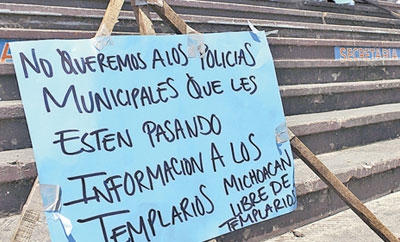Five people were killed and various others injured after an unidentified group shot at protesters in southwest Mexico’s Michoacan state, in one of several recent incidents marking escalating violence in the troubled region.
Around 200 people armed with machetes and rifles, allegedly led by vigilantes in Los Reyes municipality, held a protest outside municipal government offices on July 22, reported Animal Politico. The group protested against corrupt police who they claimed were in league with the Knights Templar criminal organization, according to the LA Times.
Early in the afternoon, a second, heavily armed group — reportedly clothed in hoods that disguised their faces — arrived in four trucks and opened fire on the protesters, killing five and wounding 10, reported Milenio, while Animal Politico reported 17 wounded. No arrests took place following the attack, while interim Michoacan Governor Jesus Reyna said the situation was under control.
It was the latest in a series of violent acts registered in Michoacan in recent days. On the same day as the shooting, three federal police were injured in an ambush while on patrol in the Lazaro Cardenas municipality. Days earlier, another three police officers were murdered and six injured, also in an ambush. Additionally, two men and two women were found dead by hanging in Buenavista Tomatlan.
InSight Crime Analysis
This series of violent incidents points to a renewed escalation of violence in Michoacan, where security forces were deployed in May in order to address the problem. Both Michoacan and neighboring Guerrero state have seen the emergence of several vigilante groups in past months. While these groups say they were created in order to fight drug-related violence that the state ignores, in Michoacan they have been accused of connections to a criminal organization, the Jalisco Cartel-New Generation, whose main rival is the Knights Templar.
It is not clear who is funding or arming the vigilantes, but the unclear motive and identity of the gunmen in Los Reyes raises further questions about the nature of the self-defense groups. At the very least, the crackdown suggests that there are certain interests in Michoacan that do not wish to see public protests carried out against police corruption.
As violence continues to proliferate in Michoacan, standoffs between vigilantes, drug trafficking organizations, and state security bodies may become more common. If the vigilantes continue to gain power, there will likely be a corresponding increase in concerns that they could develop into brutal paramilitary forces, similar to those that emerged in the Colombian conflict.

